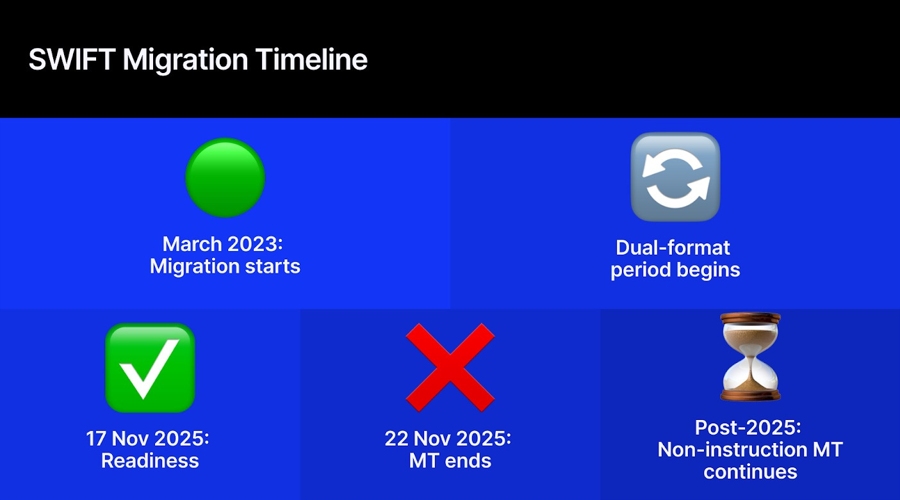As a working mom, I live by my to-do lists. From deadlines, appointments, and meetings to playdates, pediatrician follow-ups, and nanny pay days, nothing escapes my long-winded lists.
But it’s easy to get caught up in which fancy app or system you should use for your list. Lots of (very nerdy) internet arguments center around the right approach. Should you stick to pencil and paper? An iPhone app?
“I’m a firm believer in David Allen’s Getting Things Done philosophy — that ‘your mind is for having ideas, not holding them,’” said Liz Sumner, a productivity coach. In that case, getting to-dos out of your brain and into a system you trust is the best way to focus and perform your best work. But which one?
That’s why we asked Sumner and Tor Refsland, an award-winning time management blogger and SEO specialist, for advice on how to put together the “perfect” to-do list.
Step 1: Pre-drafting
To achieve the best to-do list results, take some time before drafting your next one to review your habits. Think about a few logistical details:
1. Consider your type of work. Look for repeatable rhythms in your work — tasks that happen at the same time every day, week, or month — so you can start with a standard checklist or template and add from there. For example, as an SEO strategist, Refsland says his daily core activities are divided into three categories:
- Rank own websites on top of Google
- Get new clients
- Rank clients’ websites on top of Google
From there he can insert other one-off to-dos as needed. If your job involves delegation and teamwork, be sure to include exactly who you need to collaborate with in your list. (ie. “Check in with Xander re. new launch platform progress” or “Discuss with Team Y new June objectives.”)
2. Do you prefer daily or weekly lists? Remember that weekly lists will be longer, which may be off-putting to some. If you prefer the feeling of starting each day with a fresh slate, you’ll probably benefit from daily to-do lists over weekly ones. If you prefer knowing what’s coming down the pipeline at all times, a weekly list might work better (but will need constant upkeep anyway as things change).
3. Will you combine areas of your life? According to Sumner, it’s fine to combine different areas (personal, work, etc.) of your life on one list. The real trick is to avoid adding items that you aren’t committed to completing, like “Finally clean hallway closet.”
4. Set up a system that ensures workflow capture. You’ll need some sort of an inbox to capture all your tasks, as well as regular review time to process the inbox items into the right bucket, says Sumner. It can be a pain to categorize items in the middle of a call or meeting, so having a “staging” area helps.
Some people like to use an online system like Insightly or GTDNext, while others find writing tasks on a plain old white board or in a notebook like the SELF journal gets the job done. After you know how you’ll keep track of your tasks, which process you decide to follow to organize and execute those tasks is entirely up to you. A few popular ones:
- Getting Things Done (GTD): This is the system Sumner prefers.The GTD system requires you to ask the following questions of each task: What is it? Is it actionable? What’s the next action? “If it takes less than two minutes, do it right then,” said Sumner. “If not, then delegate it or defer it.” (More here.)

- Action Method: Using the Action Method, you’ll place your projects (aka to-dos) into the following buckets: Action Steps (a list of specific tasks you need to get done on any given day), References (including any supplementary info you need to get your tasks done like videos, articles, links, etc.) and Backburners (things that don’t need to be done right now, like ideas, future pitches and goals). (More here.)

- Bullet Journal: The Bullet Journal system suggests that you keep a master list where you continuously add non-urgent tasks and you cross them off as you accomplish them. From that original list, you would create daily to-do lists that include any items that have become time-sensitive. These daily to-do lists should be as specific and actionable as possible, and may even include a section for the top tasks that need to be accomplished for the day. Figure these out by asking yourself: What tasks will have the most impact on my day? What tasks need to get done today? If I get nothing else done today, what tasks will make me feel the most accomplished? (More here.)
Step 2: Creating your list
Drafting a to-do list might seem simple, but unless you’ve put some careful thought into it, the system could fail you. For example, Refsland recommends planning your to-do list about one week in advance (making updates as necessary), and taking a look at it each night when your work is done to make any necessary adjustments.
“If you already have things coming down the pipeline, then you will know what needs to be scheduled, or if you don’t have things on your next week to-do list, you can focus on the activities that best suit you, like bringing more money to your business,” he said. “If you follow the weekly and night before ritual regarding planning your to-do list, you shouldn’t spend more than 15-30 minutes completing it.”
Those 30 minutes can seem unnecessary but a simple planning session saves a ton of time during your day, so you never spend your valuable energy wondering what you should be doing next.
Then, when it comes to construction of your list, do the following:
1. Break big, vague projects into chunks. Sumner recommends taking large projects and breaking them into smaller, easier-to-manage chunks that you can tackle throughout the week. “We tend to think of projects as the top-level desired result,” she said. “Actually, each result is made up of multiple action steps. The more you break it down, the more doable they seem.”
2. Assign a priority level for each item. Sumner also recommends including information on time sensitivity or based on limited windows of opportunity. To take this one step further, Refsland prioritizes his own to-do list tasks using the ABCDE method:
- Tasks I must do — serious consequences if they don’t get done.
- Tasks I should do — mild consequences if they don’t get done.
- Tasks I could do — no consequences if they don’t get done.
- Tasks I delegate.
- Tasks I never do. (The kicker, says Refsland, is to never do a B task before you have done all the A tasks, to never do a C task before you have done all the B tasks, etc.)
3. Limit the items you include. You can’t always control how many meetings you have in a day, but try to be realistic about how much you can actually get done in a workday. “It’s important that the items you put on the to-do list for the next day are actually realistic for you to complete,” said Refsland. “If not, it’s not a to-do list, it’s a wish list.” Don’t make your to-dos paragraphs that will take you 10 minutes to get through — keep each one limited to two sentences max to eliminate time waste. One good rule of thumb: if all of your to-do list items don’t fit on a Post-It note, they won’t fit into your day.
4. Be specific. Separate the “good idea, maybe someday” items from those that you really intend to do. “Otherwise you have a multi-page list that will never get done and takes its toll on your mental energy,” Sumner said. If you need to, keep a separate “dream” list, but only look at it when you’ve crossed all the items off your actual to-do list.
5. Make your items actionable. Include a verb with each item on your list, and the more specific the better, says Sumner. For example, “don’t just say ‘garage,’” she suggested. “Instead, say ‘take old moving boxes and paint cans to recycling; organize garden tools.’ It’s easier to anticipate the time required and makes a huge task less daunting.”
6. Place your to-do list in a strategic location. If your to-do list is in a notebook or on a dry-erase board that could easily be seen — rather than hidden on your phone or computer somewhere — Refsland recommends looking to find out what your next task is, then hiding it away. “Staring at your to-do list all the time will be counterproductive and just make you lose focus,” he said.
7. Don’t make your list in an email. For Sumner, using your email inbox to keep track of your to-do list is a big mistake because you’ll likely waste more time and energy paging through dozens of other emails to get to what you need. Plus, you are allowing other people to dictate your to-do list every time they send an email.
8. Do include time for breaks in your list. Refsland suggests skipping breaks during to-do tasks and putting time aside to take breaks in between tasks, instead. “Don’t take a short break to check your email or social media accounts,” he said. “You will lose track and become very unproductive.” If you know that you have time for a break coming up you’ll be more likely to power through.
9. Cross items off as you go. Crossing items off as you go isn’t just satisfying, but it’ll also help you pay attention to what isn’t getting done and to evaluate why, says Sumner. Looking at the items that haven’t been crossed off your to-do list will help directly with Step 3.
Step 3: Assessment
Creating the perfect to-do list will take some time as you figure out what works for you, so weighing how it went after a couple tries is essential to getting it right. To do that, start by looking back at the items that weren’t crossed off your recent lists. Ask yourself why they remained undone.
Was the task unimportant after all?
Were you unclear how to proceed?
Was it something you’re simply avoiding?
“Most items on your list are going to fall under one of three categories: find out, decide, or do,” said Sumner. “You either need to gather information, make a decision, or take action. If you haven’t been making progress, it may be because you’re trying to take action before doing the research, or making an important choice. Whenever you’re stuck, ask yourself, ‘Is there something I need to find out, decide, or do to make this happen?’”
To do this, Sumner recommends thinking of your to-do list as separate from a personal goals list. “To-do is more granular,” she said. “Goals are more big picture. I do a quick review of my to-do list in the morning and at the end of the day. At the end of the week I look ahead to make sure I’m on track to meet deadlines. I like to review major goals at least twice a year — quarterly is better.”
If an item has stuck around on your to-do list for many iterations, ask yourself what makes it important. Are you doing it for someone else and it’s time to pass the responsibility back because you simply don’t have the time? Can you find the motivation by changing your attitude or finding an alternative solution? If you truly think an item is worth completing, move up its importance to get it done, or else remove it entirely after a month of hanging around.
Remember that setting up a perfect to-do list is great, but you should always allow yourself room for flexibility. “It’s always important to take a look at the big picture, and make sure that your to-do list is aligned with that,” said Refsland. “If your big strategy changes, then this will most likely impact the activities on your to-do list.” Be adaptable and you’ll find your to-do list will help you go far.







































